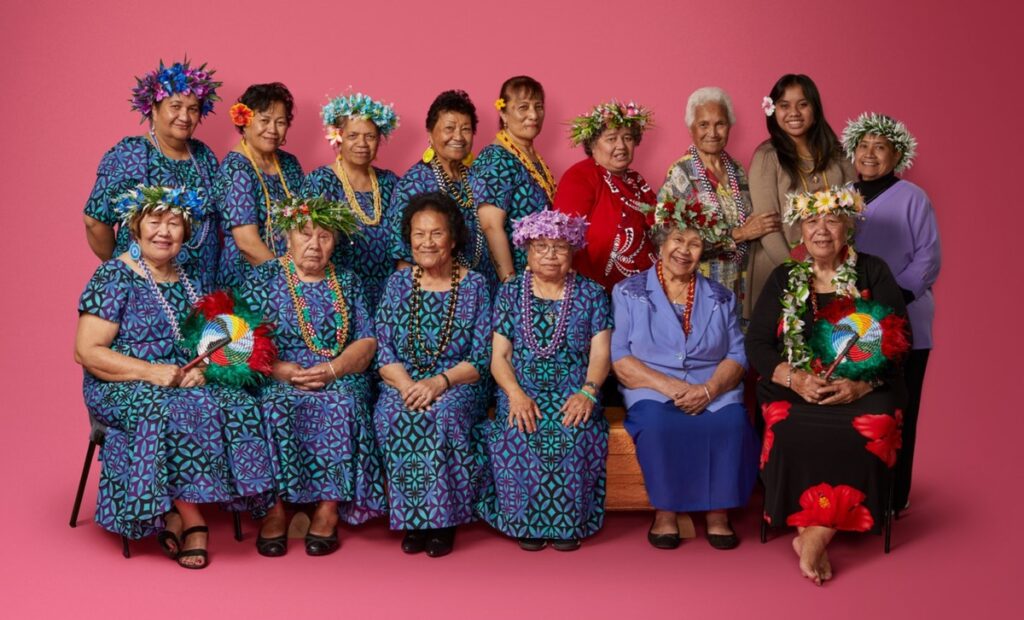A handsome tome about Niue demonstrates that the depth of a culture can be far greater than the size of the population. Each island of Moana is its own treasure.
There’s something magical about the cultures of Moana Oceania. Despite their relatively tiny populations, the islands are home to extraordinarily rich cultures with distinct stories, social structures, landscapes and crafts. We learnt a little more about this during the fabulous Tok Stories series presented by Lagi-Maama, where each island nation had a chance to present its distinct story.
Now with this mammoth publication, Falepipi he Mafola, Lagi-Maama have provided a testament to the ongoing commitments of Niueans to keep their culture alive while living far away in New Zealand Aotearoa. By the last census, only 1,564 people were living in Niue. An incredible 95% of their population now lives in New Zealand. How does a nation transplant itself while still calling its island home?

Situated between Tonga and Samoa, Niue is one of the world’s largest atoll islands. It’s traditionally called the “rock of Polynesia”. Niue has a history of keeping the world at bay. Captain Cook tried three times to land, without success. In 2020, it became the world’s first “dark sky country”, offering a rare view of the heavens, beyond bright city lights.
Niue’s unique culture is now flourishing in Auckland, thanks to the work of its first-generation mamas. Thirty years ago, they founded the collective, Falepipi he Mafola. The title means “House of Peace” and refers to the meeting house built to broker peace between the warring warrior groups of the north and south. Over the years, they have encouraged each other to develop their crafts, particularly fibre works. Molima Molly Pihigia played a leading role, which has been acknowledged in her recent recognition by the World Crafts Council as a Craft Master of the Asia Pacific Region.

The publication to celebrate their anniversary is suitably epic. Its 500 pages are filled with personal testimonies and beautiful colour photographs of the works and their makers. There are baskets, costumes, mats, fans and wall hangings, made not only with luscious natural fibres but also brightly coloured raffia and even recycled plastic bags. The testimonies are touching accounts of lives well spent, often guided by Christian faith and buoyed by strong community support.
I was particularly affected by memories of Niue, such as Matafetu Smith recalling how they used to weave in the cool of the island caves. She asked plaintively, “How can we weave in a strange land?” Their memories of home are rare and precious. Olive Fetogi Makahili writes wryly, “I have lived in New Zealand for 67 years, a beautiful country but you can only survive here with money in my opinion.” Craft plays a key role in exile. She also writes, “Never grow tired or bored because your weaving speaks clearly of your actions and the talents of your hands.”

We might worry about the age of this generation. Most of the writers are in their 80s or 90s. But there are signs of a new generation emerging. I was very pleased to read Tiahi’ola Ailena Ramona Jackson, an 11-year-old living in Niue, and how much she enjoys weaving.
This is not a book about Niue culture, It is a book by and for Niueans. It will sit proudly on the shelf as a ballast for future generations to keep faith with the unique story of their culture. More than that, it will offer inspiration for other peoples, that no matter how small their population, they can make a substantial contribution to the treasury of human culture.
If you are interested in purchasing a copy of the book you can contact Molly Pihigia via email on mpihigia@yahoo.co.nz. There is a special price of $NZD 80 for the Niuean community and for others it will cost $NZD 160.00.


